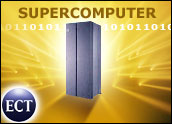
The latest edition of the TOP 500 Fastest List, which measures the speed and dominance of the world’s supercomputers, has indicated that Linux systems are now represented on more than half of the list.
The list creators use the Linpack benchmark to measure performance of the world’s machines, and have been compiling data for the past 12 years. The list project was started as a way to have a reliable basis for tracking and detecting trends in high-performance computing.
Although only a few Linux-based machines appeared on the list five years ago, Linux presence has grown strongly in the last few years, possibly due to the rise in cluster systems.
Japan’s Earth Simulator Center remains the world’s fastest supercomputer, according to the list. The number-two spot is held by Thunder, an Intel Itanium 2 cluster at the Lawrence Livermore National Laboratory.
Growing Up Fast
Although the Top 500 List does not break down systems according to operating system, list co-compiler and editor Erich Strohmaier noted it is easy to discern a major Linux presence.
In an interview with LinuxInsider, Strohmaier said that the rapid growth of Linux on the list is not surprising. “The HPC community is an early adopter of technologies,” he said. “Some of the first Unix mainframe systems in the 80s were from Cray.”
He added that in the academic arena, which is increasingly reliant on supercomputing, there has been a movement toward adapting Linux to the needs of the community. “With the quite strong rise of the cluster systems with Intel or Opteron processors, Linux is getting used quite strongly in this community.”
Establishing a Foothold
The affordability of Linux might be another reason that it is becoming more prevalent on the list. Strohmaier noted that cost, combined with established performance, has been driving more vendors and customers toward Linux-based systems.
He added that another factor might be standardization of commodity components of clustered systems. When standardization appears, larger enterprises tend to be interested.
“[There is] acceptance of clustered systems by industrial and commercial vendors in greater numbers,” he said. “This leads to Linux appearing in systems large enough to enter the Top 500 List.”
Although Linux has made huge strides in the last few years on the list, Strohmaier noted that it is not expected to take over the remainder of the list as time goes on. He said that with other operating system advancements and the use of other supercomputers, the presence of Linux-based clusters might plateau.
Little Help from Big Blue
Linux’s place among the supercomputer set should be highlighted in the near future, as IBM works to knock the Earth Simulator from its top spot.
Big Blue hopes to lead the industry with its Blue Gene supercomputer. So far, two prototypes of the machine, with 8,192 and 4,096 processors, are at number four and eight on the Top 500 List. They both use low-power PowerPC chips and a Linux kernel for the operating system. IBM has a significant presence on the rest of the list as well, with 224 systems listed.
As part of its goal, IBM is providing Blue Gene technology to the Department of Energy’s Oak Ridge National Laboratory (ORNL), which has announced that it has been chosen to lead a partnership with the aim of building the most powerful supercomputer by 2007.
ORNL associate laboratory director for Computing and Computational Sciences told LinuxInsider that the increase in computing power in the United States will have a deep impact. “It will allow us to look at the world in fundamentally different ways,” he said.
“Clearly, the technology will affect all nations, but especially in the U.S., it could be a driver of economics, since it will give us an edge in innovation,” he added.





















































